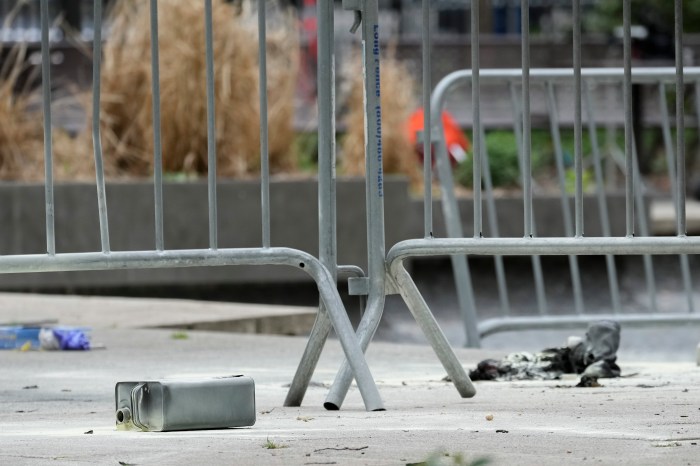 Rita Anya Nara overcame lifelong issues with anxiety and shares her tips to manage stress in “The Anxious Traveler.” Credit: Provided
Rita Anya Nara overcame lifelong issues with anxiety and shares her tips to manage stress in “The Anxious Traveler.” Credit: Provided
With the disappearance of Malaysia Airlines Flight 370, many would-be travelers might feel nervous stepping aboard an aircraft these days. Rita Anya Nara knows how overwhelming the idea of travel can be for someone with anxiety — though she’s now been to 38 countries on all seven continents, the author of “The Anxious Traveler” still feels uneasy picking up her passport.
“People can get overwhelmed very fast in a different environment,” Nara says. “It’s really that uncertainty that creates stress and anxiety, just walking into the unexpected and not knowing what to do if something goes wrong.”
Conflicts that seem small to others can be insurmountable for the anxious traveler: not knowing the way around, language barriers, potential problems like car accidents and pickpockets, even the threat of terrorism on planes and public transit. Combine these with time zones upending normal sleep patterns, and an already anxious person can quickly become exhausted, which can lead to panic attacks, refusing to leave the hotel room and even canceling a trip.
 “The Anxious Traveler” is Rita Anya Nara’s guidebook to getting out there for the anxiety-prone. Credit: Provided
“The Anxious Traveler” is Rita Anya Nara’s guidebook to getting out there for the anxiety-prone. Credit: Provided
In 2007, after a lifelong struggle with anxiety disorders and failed medical and behavioral therapies, Nara, 36, says a doctor suggested something different. “I kind of reached a breaking point with panic disorder. That’s what when my doctor suggested I do something I love, which is traveling, with a person I trust.”
Traveling with a companion — knowing that someone was looking out for her and could help if something went wrong — was what finally got Nara out into the world. Her favorite destination so far? Antarctica: “A trip of a lifetime — it was like sailing right into a moonscape.”
But the California resident didn’t start that far outside of her comfort zone. Just as conquering anxiety once is more like winning a battle than the war, Nara recommends taking smaller steps to build up to an adventure like the South Pole.
“I started out going to countries where they speak English, where crime is low — Norway, Canada,” she says. “Now, I take on more challenging environments,” like a recent trip to Morocco. At the top of her itinerary wishlist is South Korea, after previous plans had to be canceled because of a nuclear scare.
Spontaneity is the enemy of the anxious traveler. But letting someone else do all the planning can carry its own problems.
“Some people think travel means getting on a bus with a big group of strangers, and that drives them crazy, that they’d be herded,” she says.
Instead, ask a friend or family member to accompany you. Or you can employ a professional travel companion, who can be with you every step of the way and “deal with the practical matters of getting from point A to point B.”
The key to conquering travel fears is control: make a plan, know the lay of the land and take care of yourself. To that end, “The Anxious Traveler” is structured as a guidebook, with detailed steps and strategies for whatever life throws in your path.
Once at your destination, make confronting your anxiety a daily ritual.
“I’ll stay in my hotel room longer in the morning to get my bearings and understand what I’m going to do,” she said. If stress strikes during the day, “I’ll just take an hour, sit at a cafe, and have a nice glass of tea. Just turning my mind off a bit and gazing at what’s going on in front of me helps me see things in real time and manage things one at a time.”
Learning to slow down could also stop you from creating your own stress — your anxiety could be putting the people around you on edge and making them unfriendly.
Returning home from a trip would seem like the time to relax, but Nara advises not letting yourself crash after landing.
“People get angry, frustrated, get in a rut when they feel like there are changes they want to make” inspired by their vacation, she says.
Nara recommends finding a way to stay in touch with what you did while away: take up a new hobby, cook an ethnic food you tried, or even just some exercise can help keep that experience alive and eliminate the post-vacation blues.
But there’s no substitute for getting out there first hand, Nara emphasizes. Resources like the Travel Channel, blogs and magazines should serve as inspiration, not a way to live vicariously.
“We’re in an age right now here there’s HDTV and YouTube videos of every possible destination around the world,” Nara says. “You don’t want to do that because you get to the point of existing instead of being part of the real world.”
If you’re still wondering whether you’re ready to take the leap of faith, Nara says there’s only one way to get going. “Don’t wait. Don’t wait to feel better or less anxious, because it’s probably not going to happen. Just go out there and you’ll forget about your anxiety as you’re having this incredible experience.”
For more information on the book, visit TheBraveTraveler.com.
Contact Eva Kis at eva.kis@metro.us.















